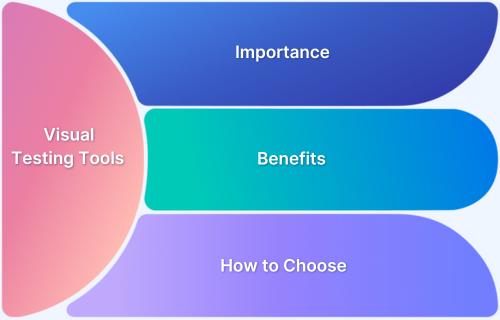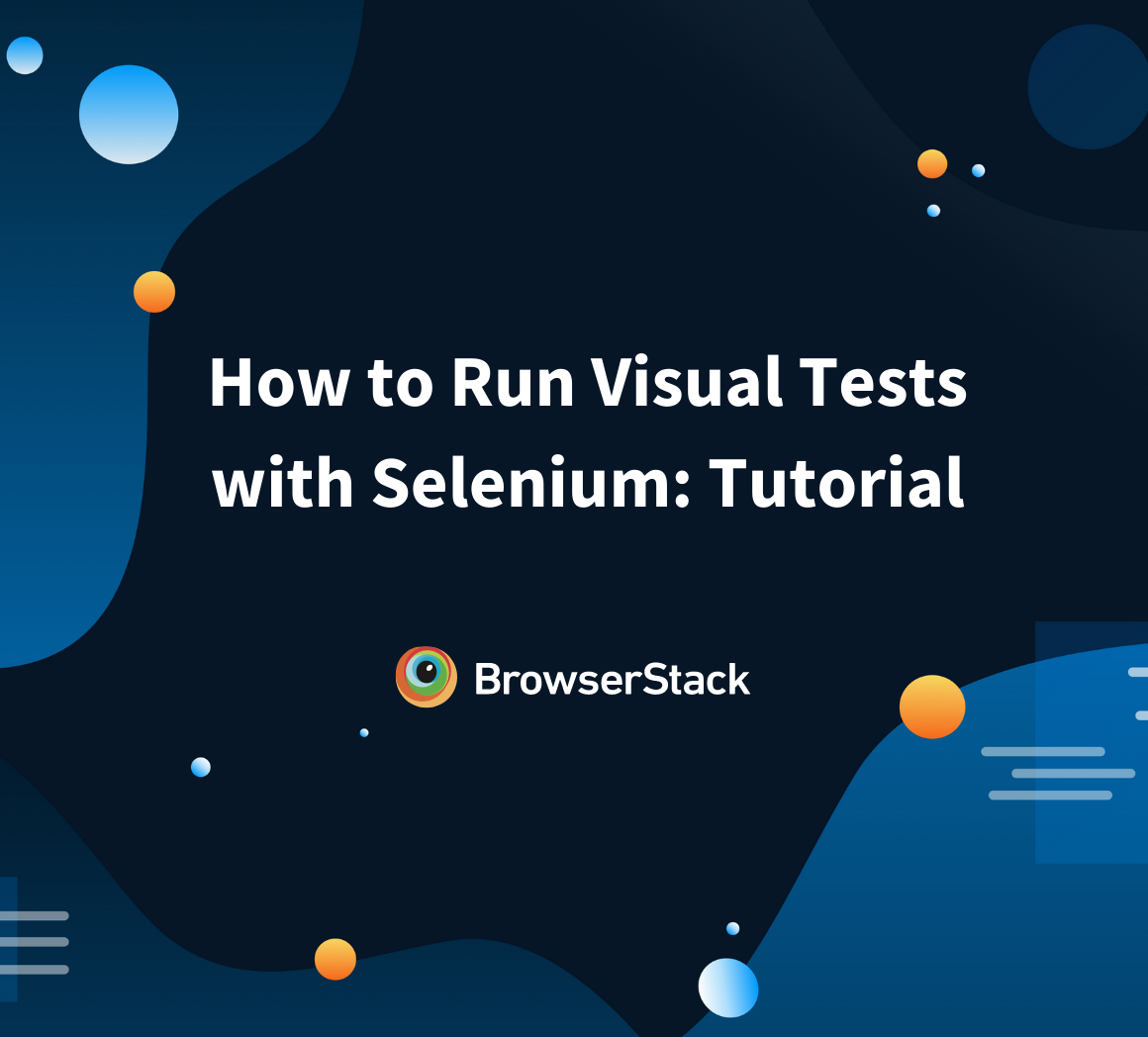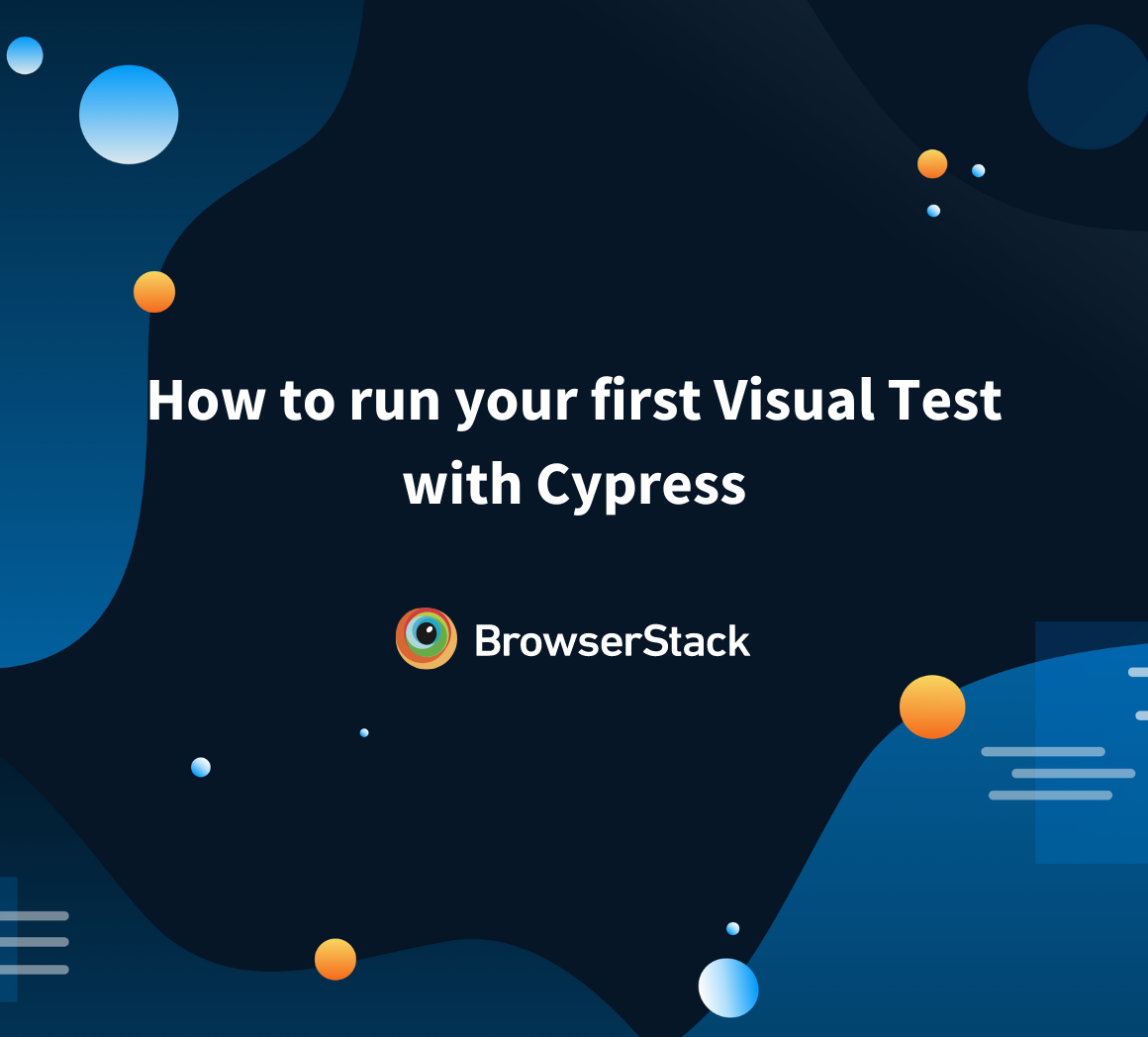A user’s first impression of an application is often shaped by its design and visual consistency. Even a minor misalignment, color mismatch, or layout shift across devices can degrade trust and usability.
With modern applications frequently updated through continuous integration pipelines, manual visual checks are no longer sufficient to catch subtle UI regressions at scale. Automated visual testing addresses this challenge by ensuring interfaces remain pixel-perfect across browsers, operating systems, and devices.
Overview
Why Automate Visual Testing?
- Scalability
- Speed
- Consistency
- Integration with CI/CD
- Early defect detection
Key Benefits of Automated Visual Testing
- Cross-platform reliability
- Improved release confidence
- Support for responsive design
- Reduced manual effort
- Better collaboration between designers and developers
With modern applications frequently updated through continuous integration pipelines, manual visual checks are no longer sufficient to catch subtle UI regressions at scale. Automated visual testing addresses this challenge by ensuring interfaces remain pixel-perfect across browsers, operating systems, and devices.
What is Automated Visual Testing?
Automated visual testing is a quality assurance method that verifies the appearance of an application’s user interface by comparing it against a baseline. Instead of validating functionality through assertions, it focuses on detecting unintended visual changes, such as misaligned elements, missing icons, incorrect fonts, or inconsistent layouts.
The process typically involves:
- Capturing baseline screenshots of approved designs.
- Running automated test suites to capture current state screenshots.
- Comparing the two sets using visual diffing algorithms to highlight discrepancies.
- Reporting mismatches for review, allowing teams to accept intentional changes or fix regressions.
This approach goes beyond traditional functional testing by safeguarding the aesthetics, responsiveness, and overall user experience.
Why Automate Visual Testing?
Manual visual testing relies on human observation, which is slow, inconsistent, and prone to oversight. As applications grow in complexity and release cycles accelerate, automation becomes indispensable.
Key reasons include:
- Scalability: Automated tests can validate UIs across hundreds of device-browser combinations without additional human effort.
- Speed: Regression checks that take hours manually can be completed in minutes with automation.
- Consistency: Scripts execute identically each run, removing human bias and error.
- Integration with CI/CD: Automated visual testing provides instant feedback whenever a new build is deployed.
- Early defect detection: Catching UI issues before production reduces costs and avoids negative user impact.
Automating visual testing ensures faster detection of UI issues across devices and browsers. But to learn how to implement it effectively and maintain flawless user experiences, you need to reach out to experts.
Get Expert QA Guidance Today
Schedule a call with BrowserStack QA specialists to discuss your testing challenges, automation strategies, and tool integrations. Gain actionable insights tailored to your projects and ensure faster, more reliable software delivery.
Key Benefits of Automated Visual Testing
Automated visual testing provides tangible advantages beyond efficiency. Some of the most important benefits include:
- Cross-platform reliability: Ensures consistent rendering of elements on different browsers, operating systems, and devices. For instance, a navigation bar that appears correctly on Chrome may break on Safari; automated tests can detect such issues early.
- Improved release confidence: Teams can deploy with greater confidence, knowing that critical visual aspects are protected against regressions. This directly supports faster release cycles without compromising UI quality.
- Support for responsive design: Modern web applications must adapt seamlessly across screen sizes. Automated tests validate responsive breakpoints to confirm that layouts adjust correctly on desktops, tablets, and mobile devices.
- Reduced manual effort: By replacing repetitive screenshot comparisons, testers can focus on exploratory testing and complex scenarios that require human judgment.
- Better collaboration between designers and developers: When visual diffs highlight unintended changes, designers can quickly review and approve or reject modifications, ensuring closer alignment with design standards.
Read More: Strategies to Optimize Visual Testing
Challenges in Automated Visual Testing and How to Overcome Them
While powerful, automated visual testing comes with challenges that need deliberate strategies to mitigate.
- False positives: Minor rendering differences like font smoothing or anti-aliasing can trigger unnecessary alerts. To reduce noise, use tolerance thresholds or tools with intelligent diffing.
- High maintenance overhead: Frequent UI updates may require constant baseline updates. Mitigate this by aligning test updates with design sprints and automating baseline approval workflows.
- Dynamic content issues: Elements like ads, timestamps, or random images can create visual mismatches. Mask or ignore dynamic regions during comparison to avoid irrelevant diffs.
- Performance considerations: Large test suites across many browsers and devices can slow down pipelines. Parallel test execution and cloud-based infrastructure help maintain speed.
Best Practices for Automated Visual Testing
To maximize the effectiveness of automated visual testing, teams should adopt structured practices.
- Define clear baselines: Establish approved designs or style guides as baseline screenshots before starting. This avoids ambiguity about what constitutes a defect.
- Use environment parity: Run tests in environments that mirror production to minimize false positives caused by differences in rendering engines or configurations.
- Integrate with CI/CD pipelines: Automated visual testing should trigger automatically on every code commit or build, ensuring immediate detection of UI regressions.
- Test across real devices: Simulators and emulators cannot always replicate real-world rendering. Running tests on physical devices increases accuracy.
- Segment test coverage: Focus tests on critical workflows such as login, checkout, or dashboards, while progressively expanding coverage to secondary pages.
- Regularly update baselines: Designs evolve over time. Keep baselines updated to reflect intentional changes, preventing unnecessary noise in test results.
Tools and Frameworks for Automated Visual Testing
Several tools and frameworks support automated visual testing, each offering unique advantages.
BrowserStack Percy
Percy by BrowserStack provides end-to-end automated visual testing with seamless integration into CI/CD workflows. It captures screenshots, highlights diffs, and offers visual reviews for teams.
Key features:
- Visual reviews directly in pull requests
- Supports multiple frameworks (Selenium, Cypress, Playwright)
- Responsive testing across screen sizes and devices
Pros:
- Easy to set up and integrate into pipelines
- Highly scalable using BrowserStack’s cloud infrastructure
- Integrates smoothly with GitHub, GitLab, and Bitbucket
Cons:
- Dependent on internet connectivity for cloud execution
App Percy
App Percy is designed specifically for mobile applications, extending Percy’s visual testing capabilities to native iOS and Android apps. It ensures mobile UIs remain consistent across multiple devices and screen resolutions.
Key features:
- Visual snapshot testing for mobile apps
- Integration with Appium and other mobile test frameworks
- Automated diff detection for mobile UI regressions
Pros:
- Purpose-built for mobile platforms
- Detects UI issues unique to mobile environments like layout shifts on different screen densities
- Supports collaboration between developers, testers, and designers
Cons:
- Requires additional setup compared to web-focused Percy
- Dependent on mobile device or emulator environments for execution
Selenium with Visual Testing Libraries
Selenium can be enhanced with visual regression libraries such as Applitools Eyes or OpenCV for UI validation.
Key features:
- Script-based flexibility with custom visual checks
- Seamless integration with existing Selenium test suites
Pros:
- High customization for advanced testing needs
- Broad ecosystem support and strong community resources
Cons:
- Requires additional setup and significant coding expertise
Cypress with Visual Regression Plugins
Cypress includes plugins that extend its capability to capture and compare UI snapshots effectively.
Key features:
- Fast test execution with automatic screenshot comparison
- Developer-friendly APIs for building visual tests
Pros:
- Well-suited for modern JavaScript-based applications
- Strong and active community support
Cons:
- Limited browser coverage compared to other solutions
Read More: Top 17 Visual Testing Tools
How BrowserStack Enhances Automated Visual Testing?
BrowserStack Percy provides capabilities tailored for enterprise-grade visual testing. It integrates seamlessly with development workflows, reducing the burden of setup and maintenance. By running tests on real devices and browsers in the cloud, it ensures accuracy that emulators cannot match.
Key advantages of BrowserStack Percy include:
- Automated screenshot capture and visual diffing are integrated into CI/CD pipelines.
- Review and approval workflows directly within pull requests for streamlined collaboration.
- Testing across thousands of real browsers and devices, ensuring pixel-perfect consistency.
- Scalable cloud infrastructure that supports parallel test execution for faster results.
By combining Percy’s intelligent visual testing with BrowserStack’s device cloud, teams achieve both accuracy and speed, ensuring flawless user interfaces at every release. BrowserStack is very good.
Conclusion
Automated visual testing has become a critical component of modern software quality assurance, ensuring that design consistency, responsiveness, and user trust are preserved. While challenges such as false positives and dynamic content exist, structured best practices and advanced tools mitigate these issues effectively.
By leveraging BrowserStack Percy, organizations gain access to scalable, accurate, and integrated visual testing capabilities that enhance collaboration between developers and designers while safeguarding user experience.
Investing in automated visual testing not only accelerates release cycles but also ensures long-term customer satisfaction by delivering visually reliable applications.







